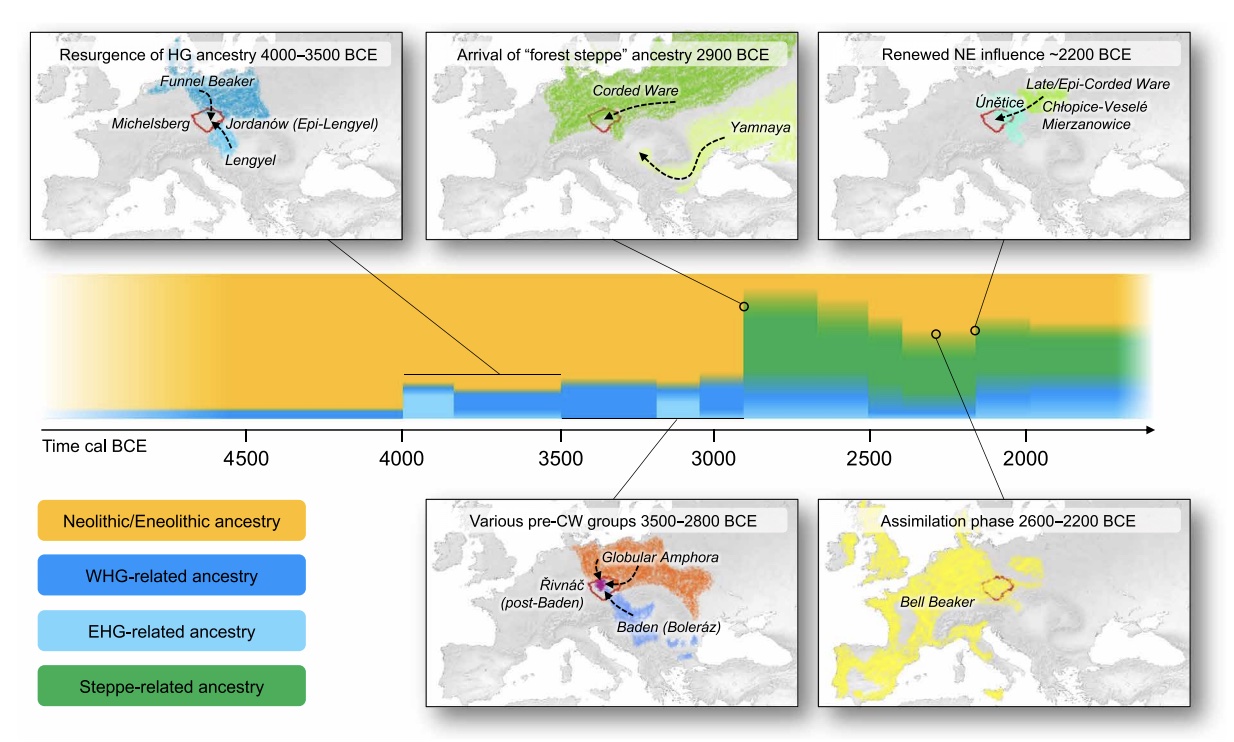Papac et al. 2021

Authors: Luka Papac, Michal Ernée, Miroslav Dobeš, Michaela Langová, Adam B Rohrlach, Franziska Aron, Gunnar U Neumann, Maria A Spyrou, Nadin Rohland, Petr Velemínský, Martin Kuna, Hana Brzobohatá, Brendan Culleton, David Daněček, Alžběta Danielisová, Miluše Dobisíková, Josef Hložek, Douglas J Kennett, Jana Klementová, Michal Kostka, Petr Krištuf, Milan Kuchařík, Jana Kuljavceva Hlavová, Petr Limburský, Drahomíra Malyková, Lucia Mattiello, Monika Pecinovská, Katarína Petriščáková, Erika Průchová, Petra Stránská, Lubor Smejtek, Jaroslav Špaček, Radka Šumberová, Ondřej Švejcar, Martin Trefný, Miloš Vávra, Jan Kolář, Volker Heyd, Johannes Krause, Ron Pinhasi, David Reich, Stephan Schiffels and Wolfgang Haak
Abstract: Europe's prehistory oversaw dynamic and complex interactions of diverse societies, hitherto unexplored at detailed regional scales. Studying 271 human genomes dated ~4900 to 1600 BCE from the European heartland, Bohemia, we reveal unprecedented genetic changes and social processes. Major migrations preceded the arrival of ``steppe'' ancestry, and at ~2800 BCE, three genetically and culturally differentiated groups coexisted. Corded Ware appeared by 2900 BCE, were initially genetically diverse, did not derive all steppe ancestry from known Yamnaya, and assimilated females of diverse backgrounds. Both Corded Ware and Bell Beaker groups underwent dynamic changes, involving sharp reductions and complete replacements of Y-chromosomal diversity at ~2600 and ~2400 BCE, respectively, the latter accompanied by increased Neolithic-like ancestry. The Bronze Age saw new social organization emerge amid a ≥40\% population turnover.